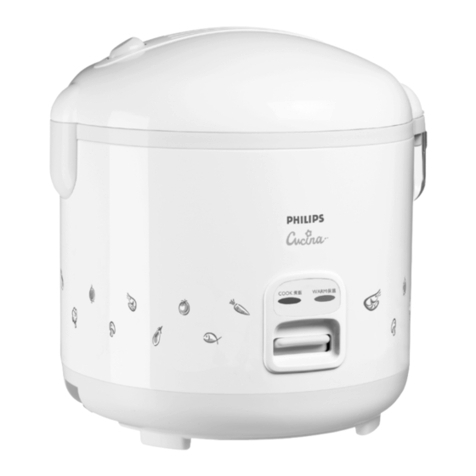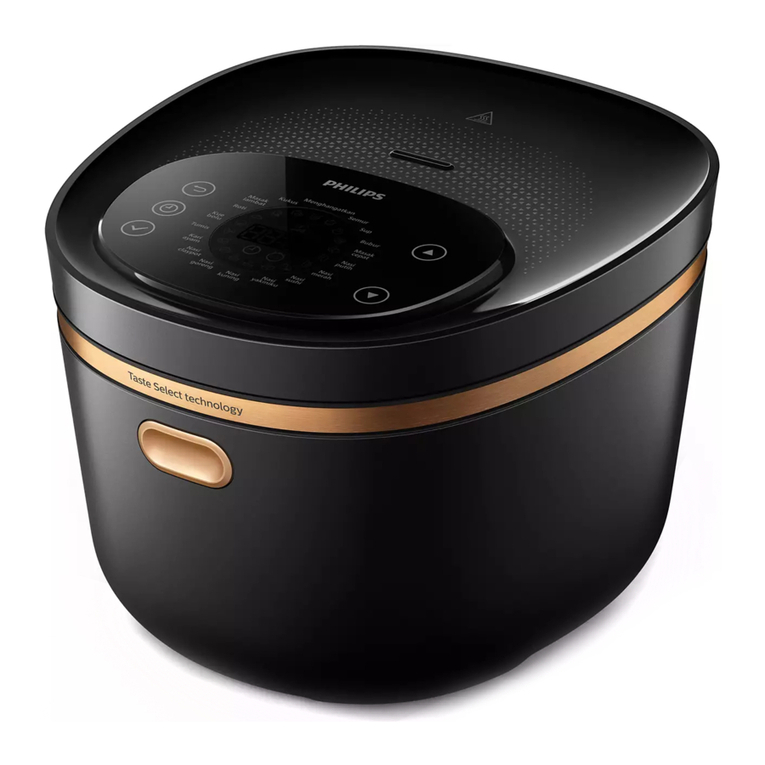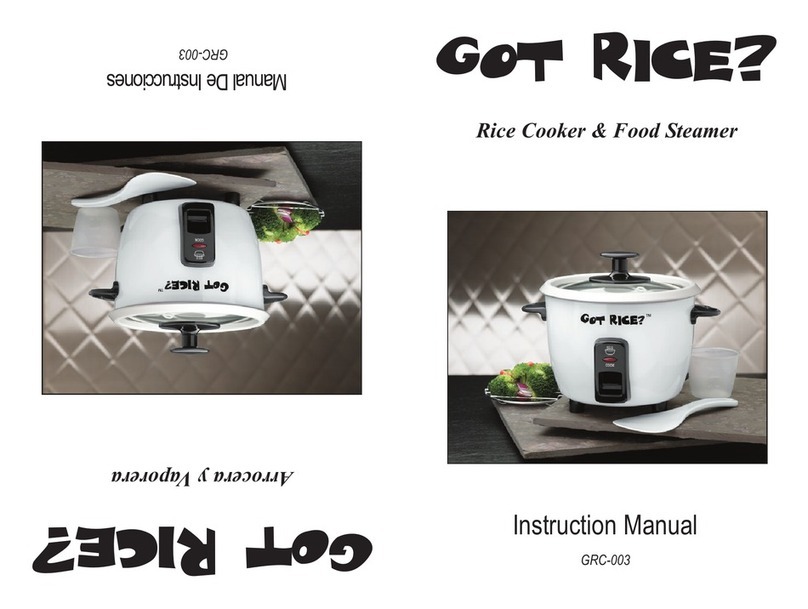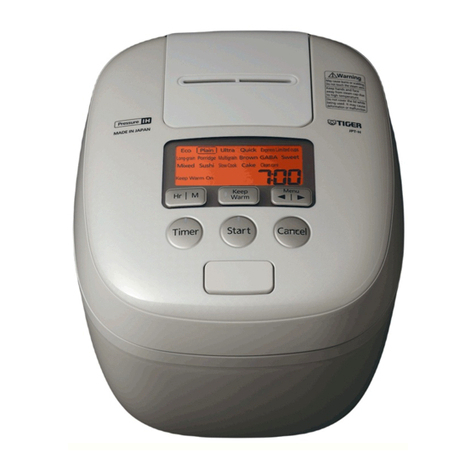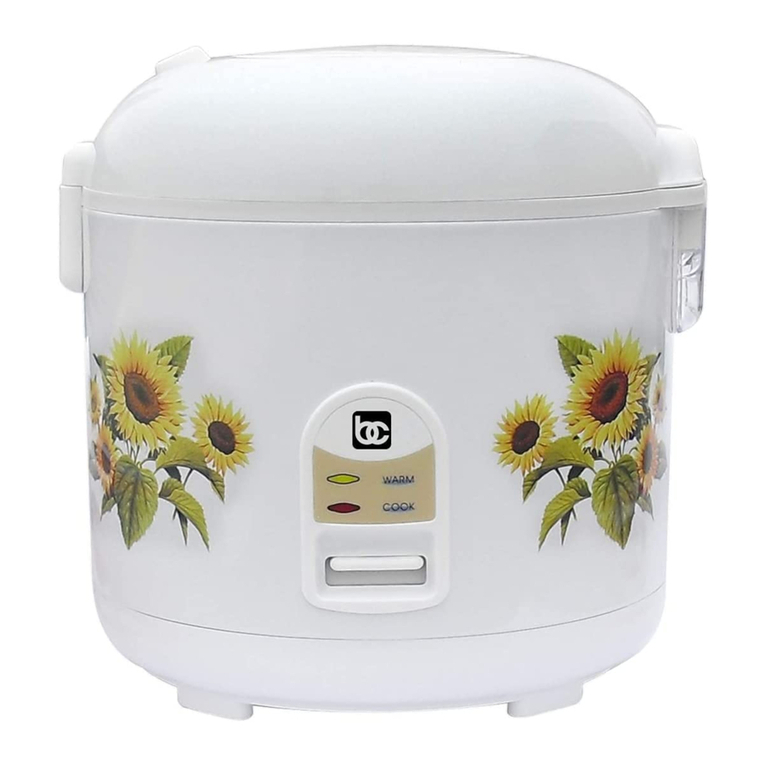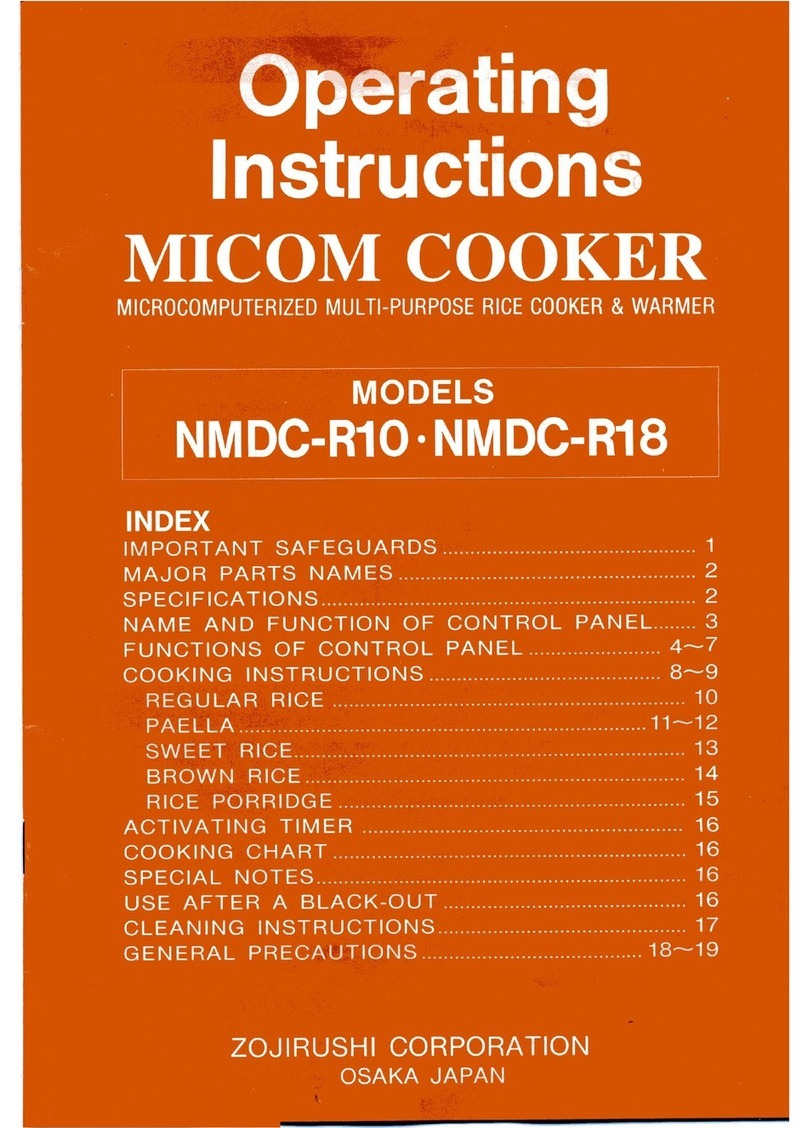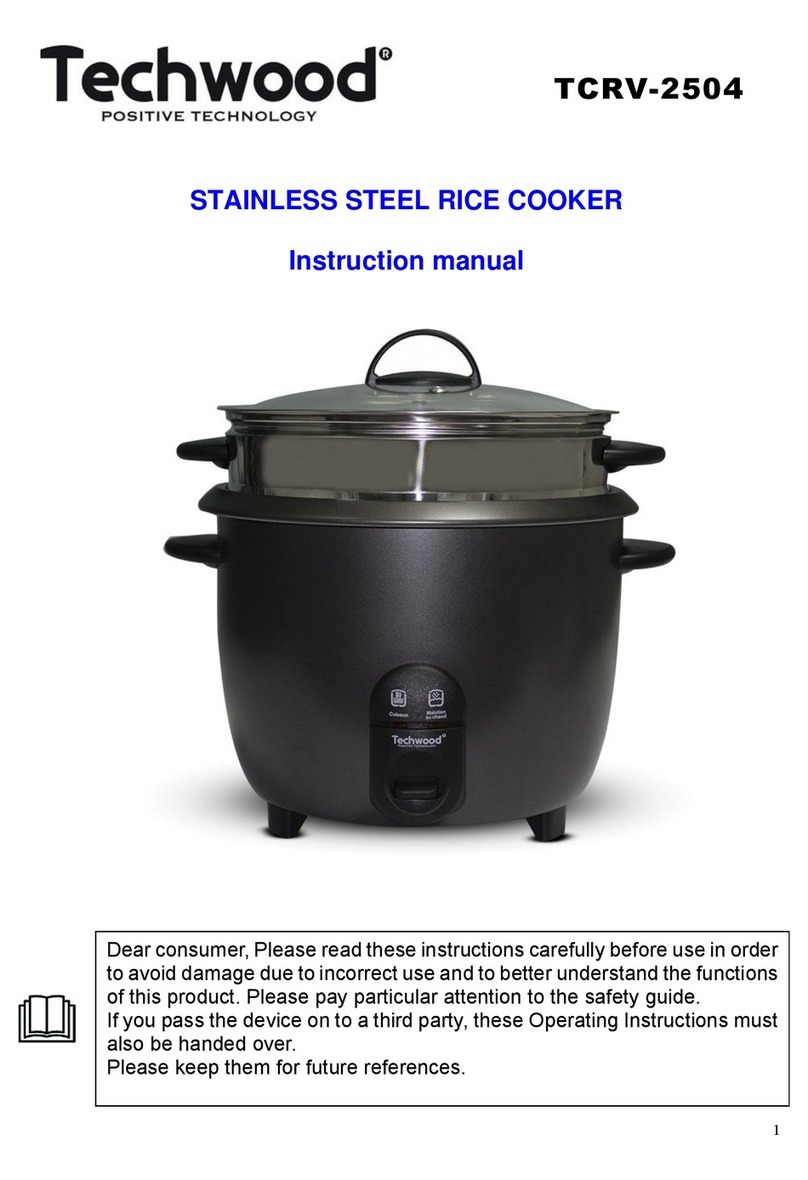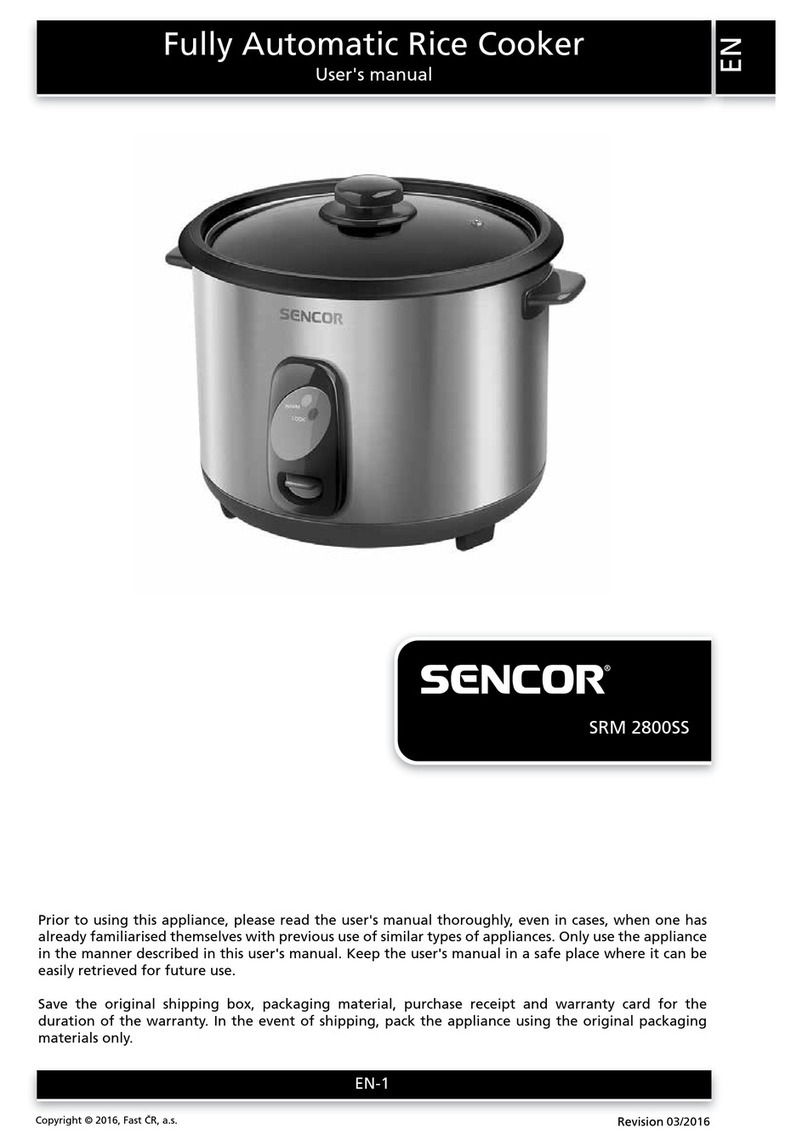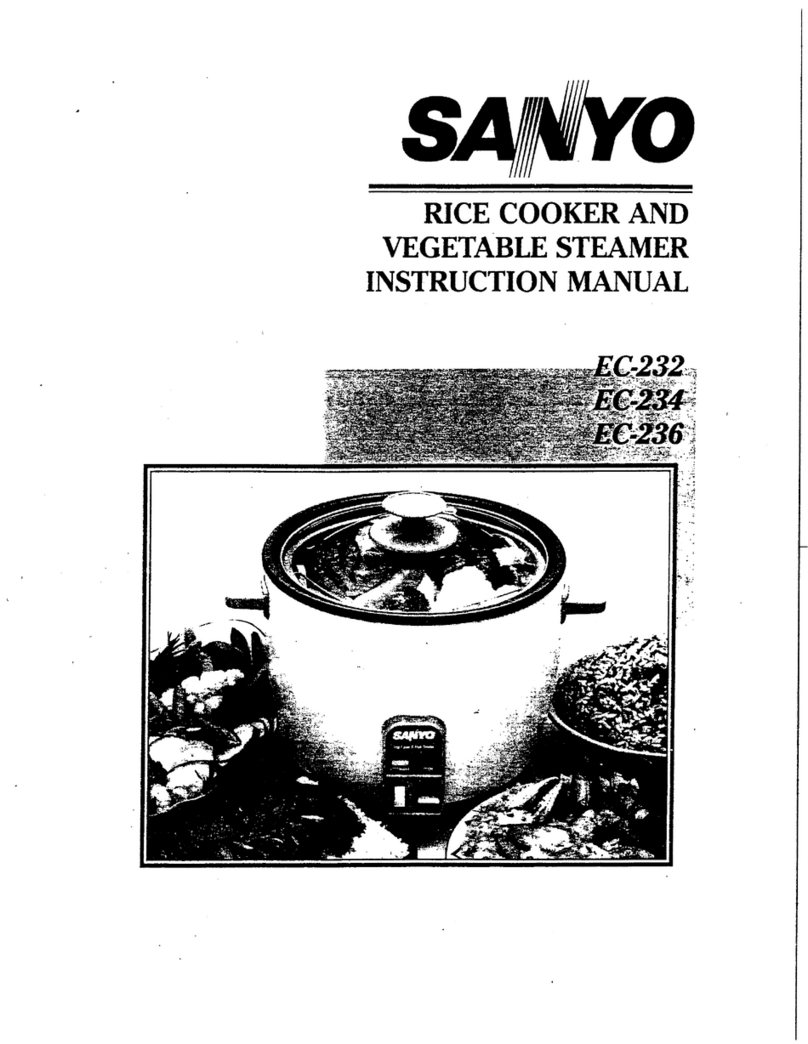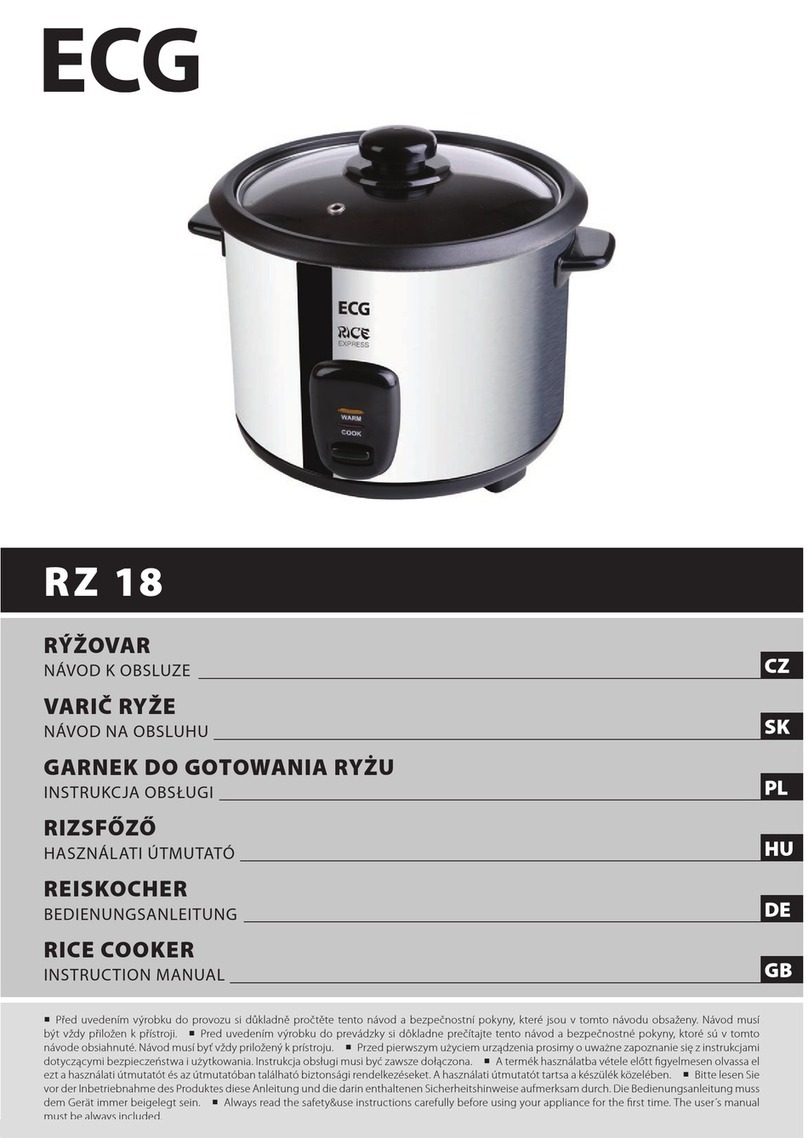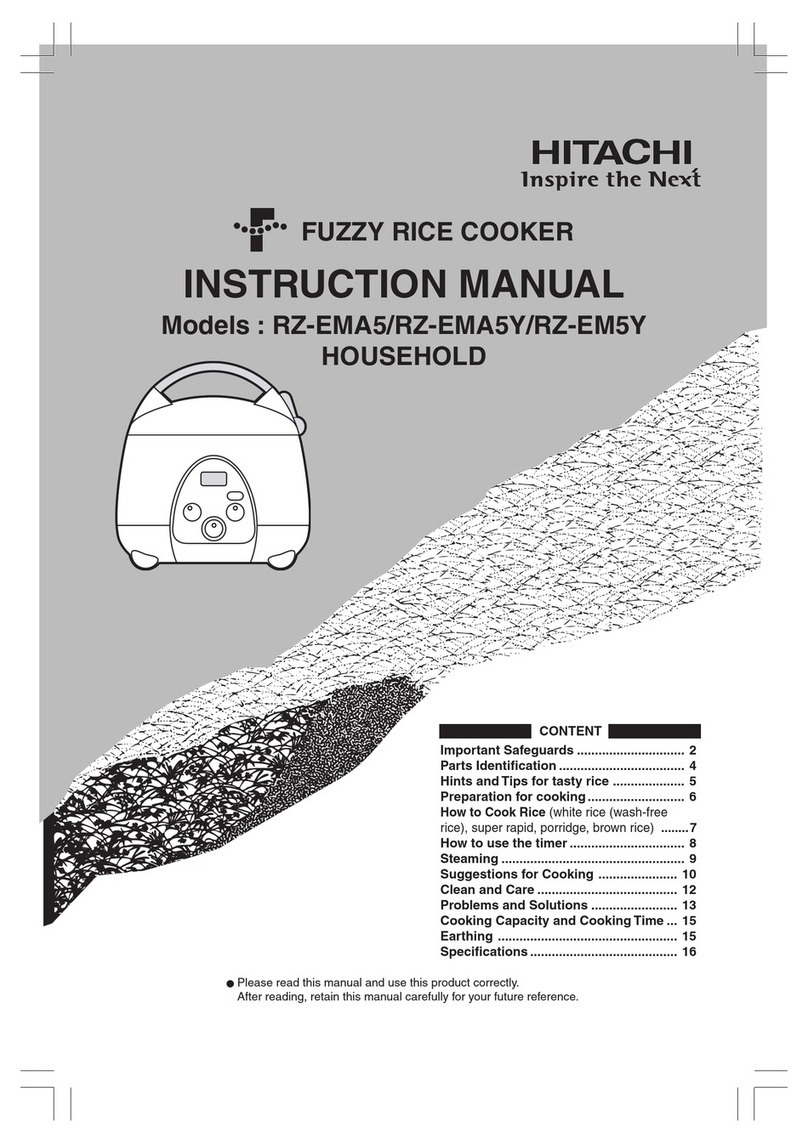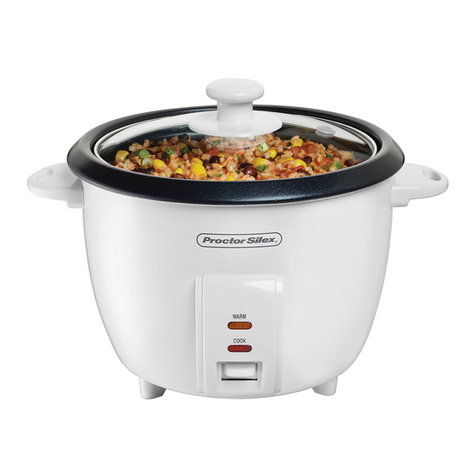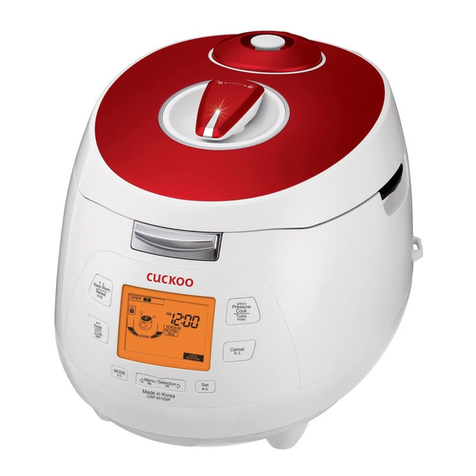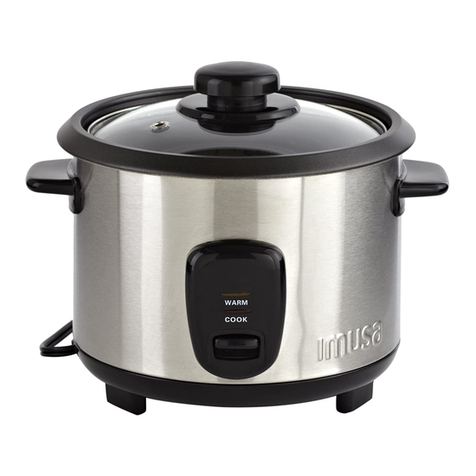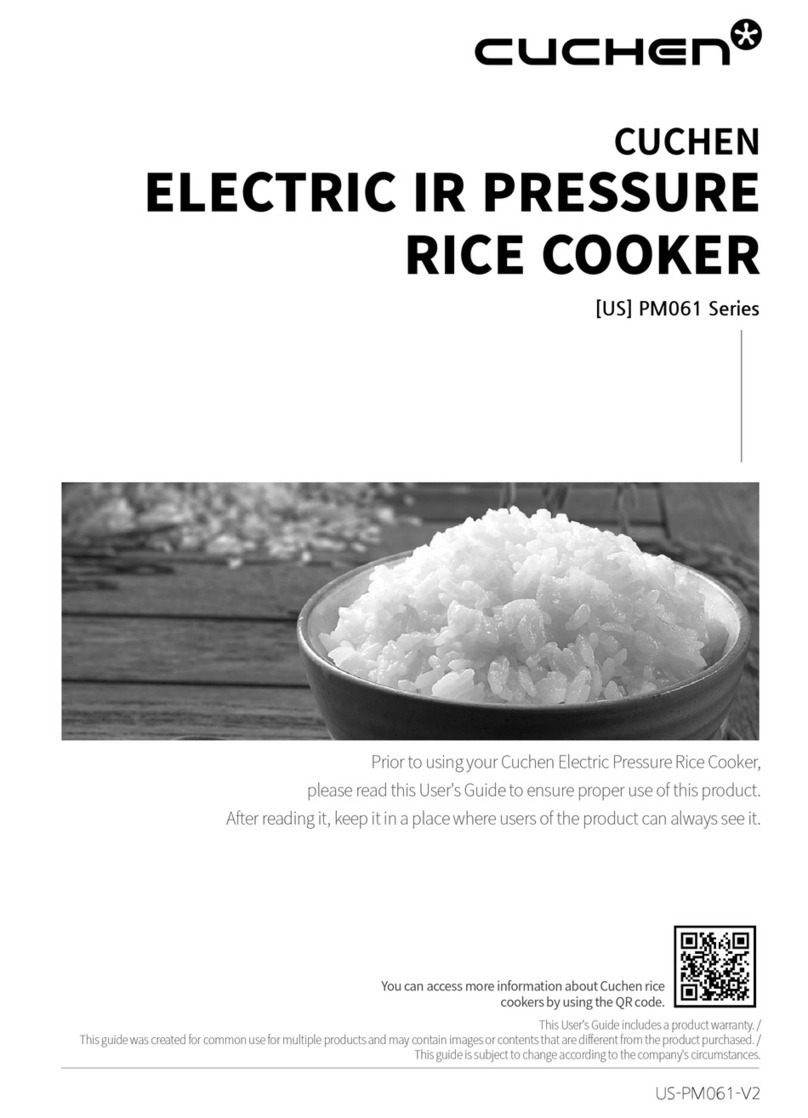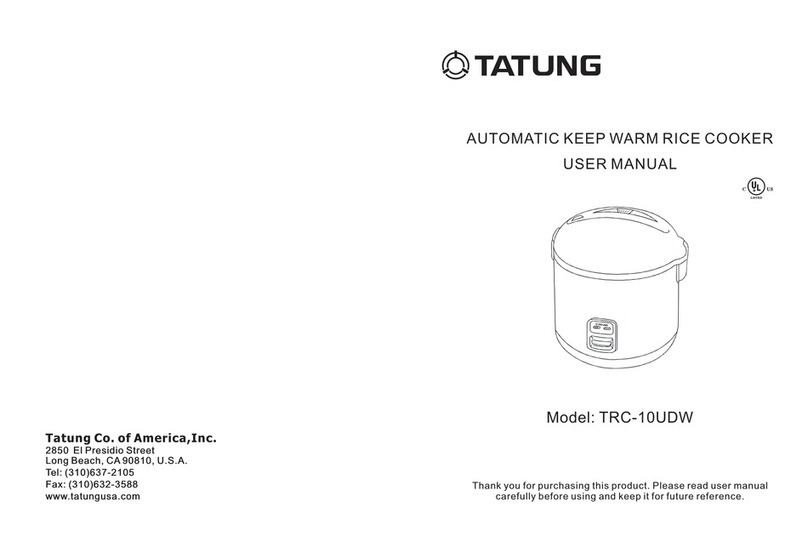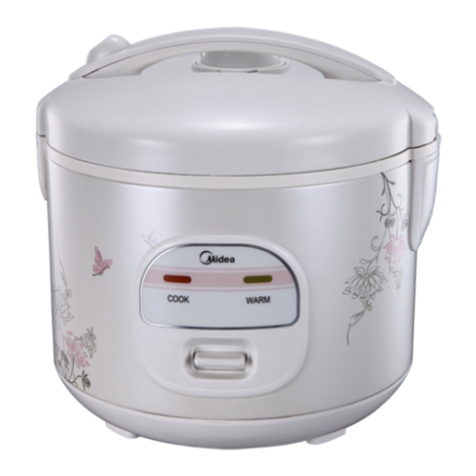3Use only a damp cloth to wipe the outside and inside of the body of the rice cooker.
Never immerse the body of the rice cooker in water, nor rinse it under the tap.Wipe the heating
element with a dry cloth.
Environment
◗Do not throw the appliance away with the normal household waste at the end of its life, but
hand it in at an official collection point for recycling. By doing this you will help to preserve
the environment (fig. 11).
Guarantee & service
If you need information or if you have a problem, please visit the Philips website at www.philips.com
or contact the Philips Customer Care Centre in your country (you will find its phone number in the
worldwide guarantee leaflet). If there is no Customer Care Centre in your country, turn to your
local Philips dealer or contact the Service Department of Philips Domestic Appliances and Personal
Care BV.
Troubleshooting
If your rice cooker does not function properly or if the cooking quality is insufficient, consult the
table below. If you are unable to solve the problem, please contact the Philips Customer Care
Centre in your country.
ENGLISH 9
Solution
Check if the rice cooker is connected to
the mains and if the plug is inserted firmly
into the wall socket.
Take the appliance to your Philips dealer or
a service centre authorised by Philips.
Take the appliance to your Philips dealer or
a service centre authorised by Philips.
Add water according to the scale on the
inside of the inner pot (see chapter 'Using
the appliance').
You have failed to press the control lever
down.
Make sure that there is no foreign residue
on the heating element.
Take the appliance to your Philips dealer or
a service centre authorised by Philips.
Add water according to the scale on the
inside of the inner pot (see chapter 'Using
the appliance').
Rinse the rice until water runs clear.
Take the appliance to your Philips dealer or
a service centre authorised by Philips.
Distribute the food evenly and do not
steam too much food at one time.
Possible cause
There is a connection problem.
The light is defective.
The light is defective.
Not enough water has been
added.
The cooking process has not
started.
The inner pot is not properly in
contact with the heating
element.
The heating element is
damaged.
Not enough or too much water
has been added.
The rice has not been rinsed
well.
The temperature control is
defective.
There is too much food in the
steam tray.
Problem
The cook light does not go on.
The keep-warm light does not
go on when the cooking
process is finished.
The rice is not cooked.
The rice is too hard or too soft.
The rice is scorched.
The rice cooker does not
automatically switch to keep-
warm mode.
The food has not been
steamed properly.







